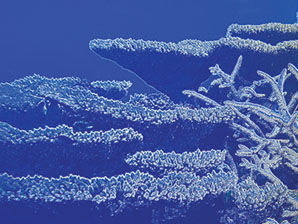
Studies have been done, published scientific articles have been peer-reviewed, and 97 percent of publishing climate scientists agree that human activity over the past century is causing global climate change. Currently, coral reefs are suffering great losses due to local threats, such as overfishing and unsustainable tourism, and global threats, such as rising ocean temperatures. As the executive director of a coral conservation nonprofit, I must ask myself how we can save coral reefs. Fortunately, we have an answer found with the corals themselves.
Today there is a growing scientific evidence that corals can adapt to environmental changes. In fact, corals have been adapting for hundreds of millions of years. We can see evidence of coral adaptation everywhere on coral reefs. For example, scientists are discovering corals that are thriving in harsh conditions, like the unusually warm waters in lagoons in American Samoa. These special corals are defying the assumption that corals are fragile and headed for extinction.
To save coral reefs, we must reduce local-level threats to reefs that help these special corals survive, grow and spread their special genes to future generations and withstand global threats – this is the process of coral adaptation. Seizing upon this revelation, CORAL is pioneering an innovate conservation blueprint called Adaptive Reefscapes – healthy networks of DIVERSE, CONNECTED and LARGE reefs.
DIVERSE:
Adaptive Reefscapes include many types of reefs, habitats, species and genes. We safeguard DIVERSITY to preserve options for an unpredictable future.
CONNECTED:
Rapid adaptation requires a CONNECTED network of healthy reefs such as Marine Protected Areas or Locally Managed Marine Areas to facilitate the spread of baby corals to different reefs and repopulate degraded reefs.
LARGE:
Small networks of reefs are vulnerable to a single disturbance such as a storm or a disease outbreak. Connecting LARGE networks of reefs protects reefscapes against losing everything all at once.
With our many partners, we are creating an Adaptive Reefscape along the Mesoamerican reef region, which spans the Caribbean coasts of Mexico, Belize, Guatemala and Honduras. Already, we have been able to identify key reefs where we can give corals a leg up by reducing coastal pollution and improving fisheries management. We are also developing a mathematical model to pinpoint additional reefs that we should protect to help corals adapt. Our goal is to launch similar Adaptive Reefscapes in three other key coral reef regions around the world. Creating successful reefscapes in these regions will provide a proven blueprint for global coral reef conservation.
